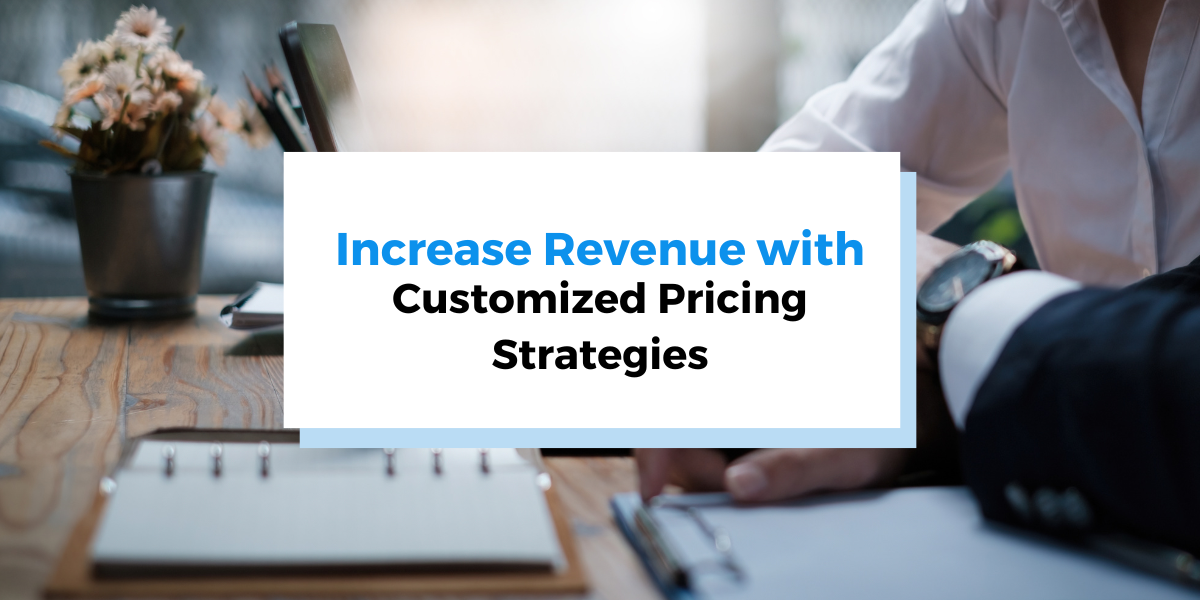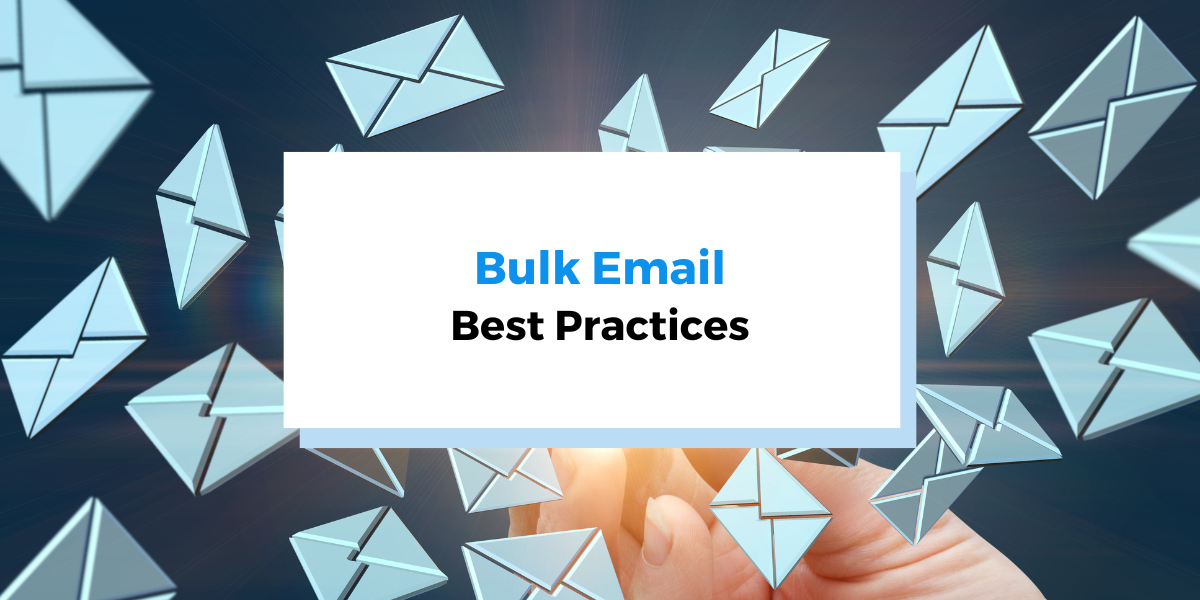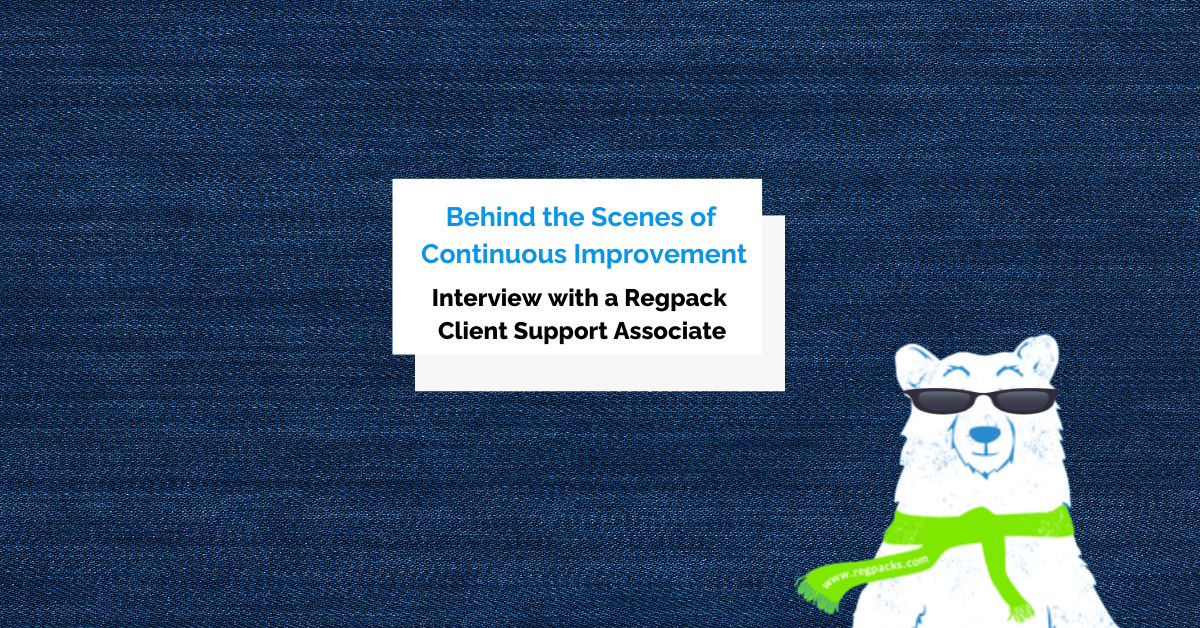When a company offers a subscription-based product or service, its livelihood depends on satisfied and loyal customers.
In fact, we might even argue that subscriber experience is just as important as the product or service itself, if not more so.
Failing to provide a good experience increases churn and drives customers right into the arms of your competitors, all of which negatively impacts your revenue.
But where should you start if you want to improve it? After all, the subscriber experience spans their entire journey with your brand.
The trick is to build a solid foundation by improving communication, reducing friction, and rewarding loyalty.
Below, we’ll walk you through six crucial steps for optimizing the subscriber experience as subscribers advance through member journey stages.
- Reach Out to Subscribers by Email
- Make Use of A/B Testing
- Make It Easy for Subscribers to Pay
- Reward Subscribers for Their Loyalty
- Offer Proactive Customer Service
- Ask Your Subscribers for Feedback
- Optimize the Member Journey
Reach Out to Subscribers by Email
Email is an invaluable resource for optimizing subscriber experience, especially during your initial interaction with subscribers.
It can be used to onboard new subscribers, but also to re-engage existing subscribers and keep your brand top-of-mind with your customers.
Let’s look at a few email marketing best practices for using this form of communication to its fullest potential.
Include an Optimized Subject Line
There’s a reason 47% of marketers test different email subject lines to see which works best: the subject line can make the difference between an opened email and an archived one.

Source: Hubspot blog
According to Hubspot’s marketing experts, the best email subject lines:
- Are short and sweet (fewer than 50 characters)
- Create a sense of urgency (“Limited time offer”)
- Use action words (“Snap up this sweet deal”)
- Hint at the benefits included in the email (“Fee bonus inside!”), without making false promises
Make sure to implement these guidelines when sending emails to your subscribers.
Take Advantage of Preview Text
Preview text is the snippet of copy that appears after the subject line in your email inbox.

Source: Gmail
Many email clients automatically pull in the first bit of copy from your email body, but you can usually customize the preview text for a cleaner look.
For the best results, treat your preview text as an extension of the subject line. Avoid repetition, keep the message short and snappy—and do your best to pique the recipient’s interest.
Preview text settings are set by your subscriber’s email client, which means that the visibility of the preview text and the maximum character count vary from subscriber to subscriber.
A good rule of thumb is to cap your preview text at 90 characters.
Personalize the Email
With today’s advanced email marketing tools, there’s really no excuse not to tailor emails to fit their individual recipients.
A personalized token (“Hi, {first name}”) in the email’s salutation or subject line can increase open rates by 26%—but there’s no reason to stop there.
You can customize emails even further by:
- Using segmentation to send only the most relevant emails (and avoid inbox overload)
- Sending triggered emails based on user behavior (like abandoned cart, welcome, and reminder emails)
- Celebrating milestones (like birthdays and subscription anniversaries)
- Making your copy more readable by avoiding jargon, using humor, and being less formal
Personalizing your communication with your subscribers makes them feel cared for, and helps increase loyalty.
Include a Clear CTA
A call to action (CTA) is a button or text that invites the reader to take a specific next step.
That next step can be anything from clicking a link to subscribing to a newsletter to making a purchase.
Every email you send should have a purpose, which means every email should have a CTA. For best results, your call to action should:
- Be clear and concise
- Convey a sense of urgency
- Focus on the benefits of the offer
- Be eye-catching (ideally including a colorful button)
A good CTA increases the likelihood of the subscriber taking the next step in their relationship with your company, be it prolonging their subscription or purchasing additional goods or services.
Make Use of A/B Testing
The best way to maximize your marketing efforts is to make sure you know what works—and what doesn’t.
A/B testing is a tried and true method for learning which version of your offering, be it a landing page, an email, or even a product, subscribers prefer.
This type of experimentation is quite simple: you generate at least two versions of the content you want to test, then send each version to a different group.
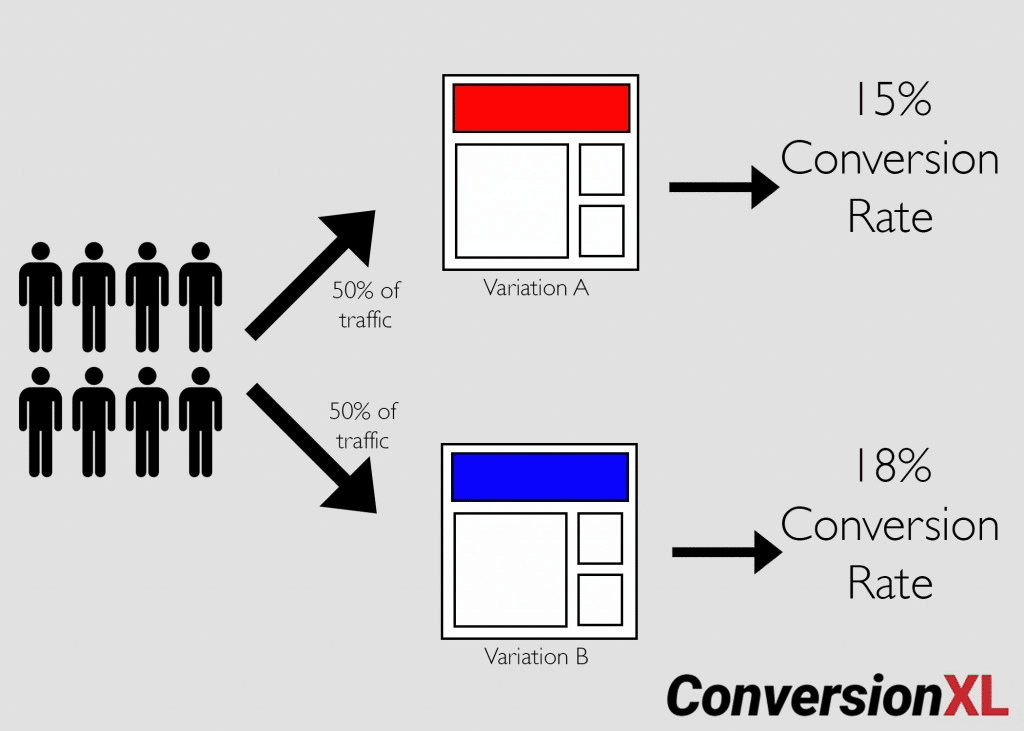
Source: ConversionXL
The benefit of A/B testing is that it teaches you what your real-life subscribers want.
An industry’s best practices tell you what the statistical average prefers, but each audience thinks and behaves slightly differently.
Maybe you have an existing landing that is already performing well, but you want to see if placing your CTA button further up the page will increase conversions.
Or perhaps you decide to create an alternate headline for a paid Facebook ad.
You can keep what’s already working (Variation A) while testing an alternative (Variation B) at the same time.
The best way to conduct A/B testing is to change only one variable at a time.
If you change multiple aspects of your email or landing page at once, it’ll be hard to determine which element is affecting user behavior.
Make It Easy for Subscribers to Pay
When a new subscriber gets to the point of deciding to purchase a product or membership from you, don’t let a difficult payment process be the obstacle that turns them away.
Your goal as a customer success specialist is to reduce friction at all points of their member journey.
To optimize each subscriber’s experience, make it a top priority to simplify the payment process.
Use a payment processor that offers a variety of payment options and robust features that prioritize ease of use on both sides.
And of course, when you’re a subscription business, recurring billing features are non-negotiable.
Regpack’s subscription billing platform was built to make accepting payments as painless as possible.
With recurring billing, customizable payment forms, and multi-currency payments, Regpack prioritizes customer satisfaction and brand growth.

Source: Regpack
If you’re still sending manual invoices and taking payments over the phone, you need a payment processing solution—especially if you’re looking to optimize subscriber experience.
Speak to an expert today to find out how Regpack can help you reduce friction.
Reward Subscribers for Their Loyalty
Everyone likes to know they’re appreciated, and your subscribers are no different.
Showing that you value their business can vastly improve the customer’s experience—and your subscription renewal rates.
There are many ways to reward your customers for being loyal members.
For instance, you might choose a different customer to celebrate every month (with their permission) on your social media feed, email newsletter, or storefront.
Productivity app Todoist is one great example of celebrating its most-loyal customers:
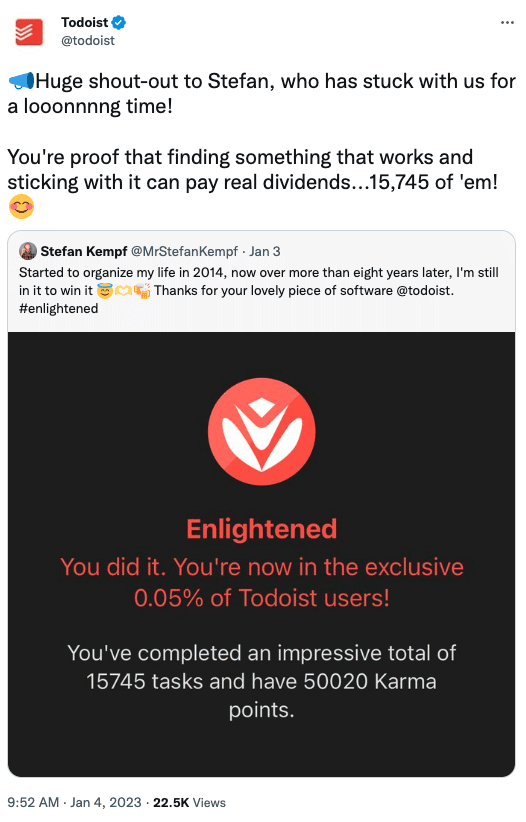
Source: Todoist on Twitter
Another simple way to show your subscribers you value their business is to offer rewards like discounts and early access to new features or events.
Many SaaS and tech companies offer their existing customers a chance to be part of a beta release of a new product or feature.
Simply invite customers to sign up to be the first to hear about new products or services—then use your email marketing software to create a separate tag or segment for those who say yes.
Sending feedback surveys is another easy way to reward customer loyalty. Asking repeat customers for their opinion shows that you appreciate them and care what they think.
If your customers feel like VIPs, it’ll be much easier to build trust and a long-term relationship with them.
Offer Proactive Customer Service
Great customer service is essential to the subscriber experience. If you want to optimize your customer’s journey with your brand, you can’t afford to be hands-off or just reactive.
Gone are the days of customer service being a call center somewhere, waiting on the customer to call and make a complaint.
If your customer service team spends their time reacting to problems instead of proactively enhancing the customer experience, you’re already falling behind.
As Amanda Roosa writes for the Zendesk blog:
Waiting for a customer to notify you of a problem is like waiting for your houseplants to start wilting before you water them—the damage is done.
If the customer has to call or email you about a problem, they’re probably already frustrated with your product or service.
At that point, you not only need to find a solution to the specific problem, but also to restore the customer’s faith in you as a brand.
Instead, proactive customer service can vastly improve your subscriber satisfaction (and overall brand health).
In fact, one Aberdeen study found that companies with proactive contact centers saw at least double the percentage of year-over-year growth compared to brands with reactive ones.
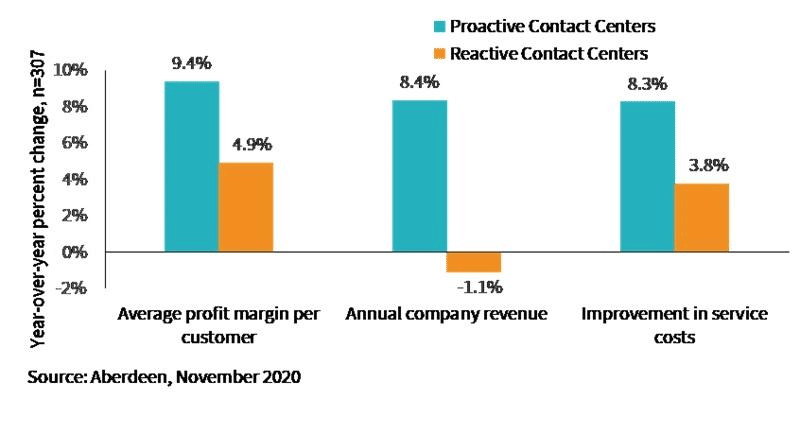
Source: Kapture CRM
Anticipate subscribers’ problems and reach out with a solution before they even have the chance to contact customer support.
Employ strategies like:
- Reaching out regularly for feedback (see the next section for more ideas)
- Establishing a knowledge base with useful information on using your product or service successfully
- Informing subscribers of incidents like data breaches in a timely manner
- Testing your product or service rigorously and regularly—and making bug fixes a priority
- Being active on social media, responding quickly and courteously to subscriber questions and complaints
- Using AI chatbots to answer basic questions without the subscriber having to reach out to a support agent
This preemptive client support can benefit your brand by increasing sales and customer loyalty, and by reducing the load on your customer support agents.
Ask Your Subscribers for Feedback
While asking for feedback, and acting on it, is essential to optimizing your customers’ experience, it can also sometimes be tricky.
Your subscribers are busy, and very few of them are willing to drop what they’re doing and fill out a survey just because it lands in their email inbox.
Others may be nervous to answer honestly about your product or service’s flaws.
The trick to gathering enough feedback is using a multi-pronged approach.
You can gather feedback directly, like through email or SMS surveys, or indirectly—like through social listening and website analytics.
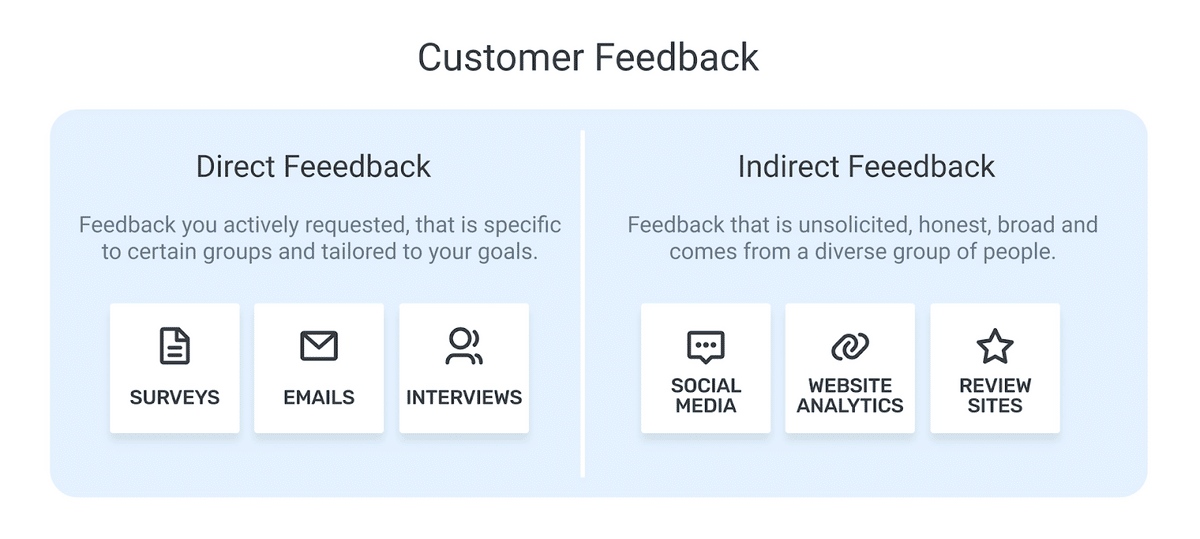
Here are some of the best techniques for collecting direct user feedback:
- Email surveys
- SMS surveys
- Survey kiosks at live events
- In-person interviews
- Surveys after a live chat session
You can motivate more responses by offering discounts for responding to an email or SMS survey.
You might even try posting a link to the survey on social media and throwing a social media contest (“fill out this survey to be entered to win!”) to incentivize more responses.
You can also try these indirect feedback collection techniques:
- Analyzing recorded sales and subscriber service calls
- Monitoring social media mentions and forum chatter about your brand
- Using sites like Google Alerts and Yext to monitor the web for mentions of your company
- Using a heatmap on your website to see the most frequented sections and pages
Making an effort to collect and learn from feedback can benefit not only the subscriber experience, but your company as well.
Showing you understand your subscribers’ needs will make your product or service feel personalized to them.
And according to one RedPoint Global study:
Brands that can get personalization right will be rewarded, with consumers highly likely (70%) to purchase exclusively from brands that show they understand them.
When a user has a satisfying experience with your product or service, they’re more likely to remain a loyal subscriber.
Not only that, but those increased referrals and positive reviews can lead to even more customers in the long run.
Optimize the Member Journey
Most modern consumers are just one bad experience away from taking their business elsewhere.
To enhance each subscriber’s experience, start by using email marketing best practices to create an open flow of communication.
Don’t be afraid to A/B test your communication efforts, either.
Then, pay attention to friction points. Make it as easy as possible for customers to submit payments, especially if they have a recurring payment.
Build a healthy customer relationship by rewarding subscribers for their loyalty, offering proactive customer support, and regularly soliciting feedback.
The work of optimizing subscriber experience is never truly over, since customer preferences are always changing—and your business always has room for improvement.



